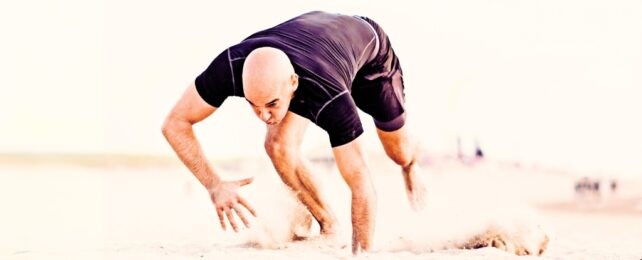Quadrobics: The Four-Limb Fitness Craze That Captured the World—From Guinness Record to Global Buzz, with a Side of Controversy
A new online trend has people scuttling, crawling, and bounding around on all fours, filming themselves as they move. The videos are drawing big audiences and strong reactions. The practice is called quadrobics, and proponents say the routine builds fitness, strength, mobility, and even spirituality—a way to reconnect with nature and a primal self. History notes: Kenichi Ito set the early mark in 2008 by sprinting 100 metres on all fours. Since then, records have fallen: Collin McClure ran 15.66 seconds in 2022, and Ryusei Yonee posted 14.55 seconds in 2025. But the big question remains: is quadrobics actually good for you, or is it mostly a viral spectacle? The truth is nuanced: possible benefits exist, but there is no proof it outperforms traditional workouts. For most people, it may work best as a supplement to an established training routine.

In This Article:
What Quadrobics Is and Why People Do It
Quadrobics combines quattuor (Latin for four) and aerobics—a rhythm-based exercise that uses the body's large muscle groups. Practitioners perform movements such as bear crawls, leopard walks, leaps, and balances. Many of these moves have long been used as warm-ups or mobility drills, but quadrobics recasts them as a visually striking, full-body routine. Beyond fitness, some adherents describe quadrobics as a path to a more primal self—a sense of connection to nature or identity that fits the broader trend of ancestral wellness.

What Science Says About Benefits and Limits
There is some evidence that quadrupedal movement can improve balance, flexibility, and core stability. Its rhythmic nature can elevate heart rate and provide an aerobic stimulus. However, it relies on body-weight resistance, so gains in strength and bone density are likely more limited than with traditional weight lifting, which allows progressive overload. For cardio, running or similar activities may offer clearer benefits. As with any exercise, there are injury risks. Beginners should ease in, giving hands, wrists, elbows, and shoulders time to adapt, and monitor how they feel after each session. Overall, quadrobics is unlikely to be superior to mainstream training and is best viewed as a supplement.

Culture, Controversy, and the Politics of a Primal Trend
The trend has spawned subcultures, including groups in Russia who blend quadrobics with costume play, sometimes crawling outdoors in animal masks. The therian community—people who identify as non-human animals—has been a significant source of quadrobics content. Not all therians practice it, but for some, moving on four limbs is an embodied expression of identity. The furry fandom, which centers on anthropomorphic animal characters, is a separate community. The trend has drawn concern from politicians and authorities: in some places it has sparked moral panic about youth culture, and Uzbekistan’s Interior Ministry warned that children’s involvement could be treated as parental neglect. One Russian politician, Vyacheslav Volodin, called it a “dehumanisation project.” Quadrobics is about movement, not identity or cosplay.

How to Approach Quadrobics Safely and Thoughtfully
If you want to try quadrobics, treat it as a mobility or conditioning drill rather than a full replacement for established training. Start very slowly, focusing on proper form and joint comfort. Progress gradually—hands, wrists, elbows, and shoulders need time to adapt to the load placed on them. Use quadrobics as a supplement to a well-rounded program: combine it with traditional cardio, resistance training, and mobility work. If you have injuries or clinical concerns, consult a professional before trying extended sessions.

